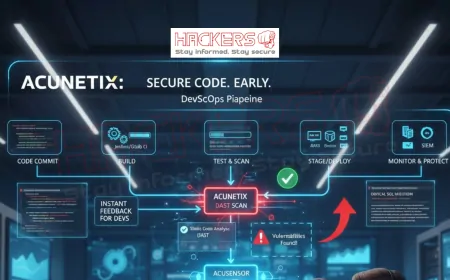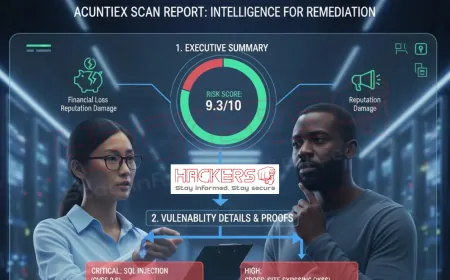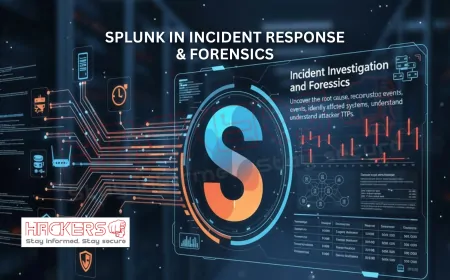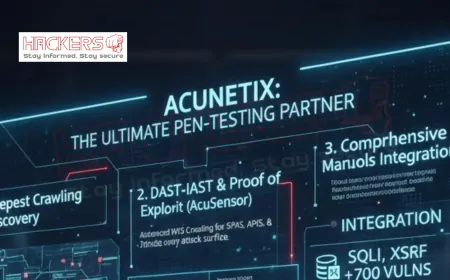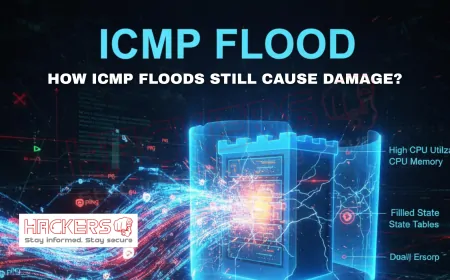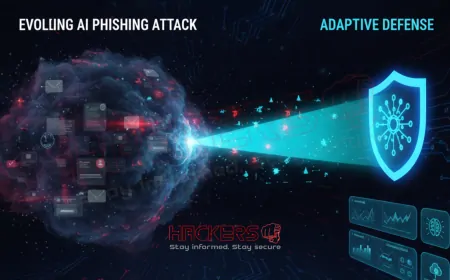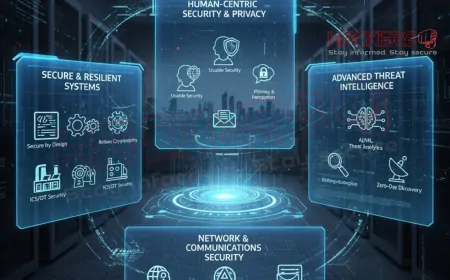What Is Splunk and How Does It Power Modern Cyber Defense?
Every second, your network generates thousands of digital footprints: login attempts, firewall blocks, file downloads, and error messages. Most of them are harmless. Some of them are the first sign of a breach. How do you know which is which, in real time, before damage is done? That’s where Splunk comes in. It’s not just a tool. It’s the nervous system of modern cybersecurity. It ingests massive streams of machine data, finds patterns, and alerts you the moment something goes wrong. In 2025, Splunk isn’t optional. It’s the difference between detecting a hacker in 5 minutes or discovering a breach 200 days later. This beginner-friendly guide explains what Splunk is, how it works, and why it’s the backbone of cyber defense for banks, hospitals, governments, and startups alike. No jargon. No sales pitch. Just clear, practical insight from the front lines.
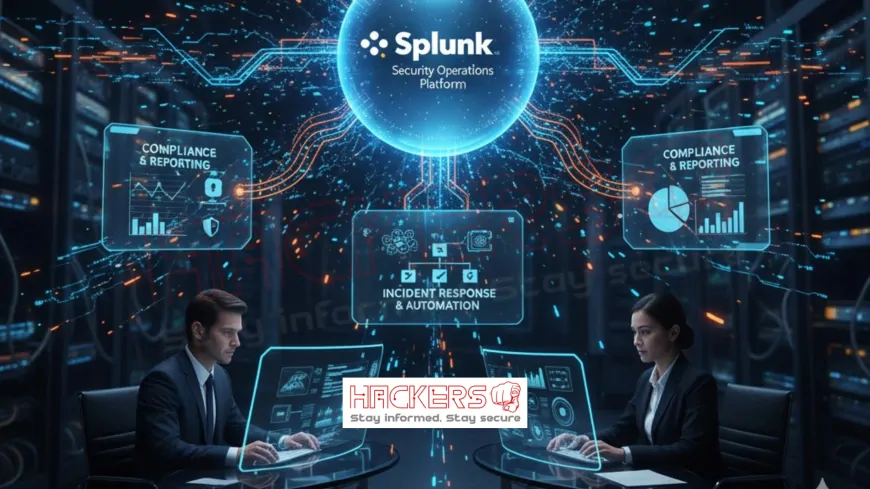
Table of Contents
- What Is Splunk? A Simple Definition
- How Splunk Works: From Data to Defense
- Core Features That Power Cyber Defense
- Splunk as a SIEM: Security Information and Event Management
- Splunk SOAR: Automating Incident Response
- Top 5 Real-World Cyber Defense Use Cases
- Splunk Free vs. Splunk Cloud vs. Enterprise
- How to Get Started with Splunk (Even as a Beginner)
- Splunk vs. ELK, Datadog, and Microsoft Sentinel
- Splunk Comparison Table
- The Future of Splunk in Cyber Defense
- Conclusion: Splunk Isn’t Just Data. It’s Decisions.
What Is Splunk? A Simple Definition
Splunk is a software platform that collects, indexes, and analyzes machine-generated data in real time. Think of it as Google for your IT systems.
It answers questions like:
- Who logged into the server at 3 AM?
- Why did the payment system crash?
- Is someone downloading 10 GB of customer data?
- Are we under a ransomware attack?
Splunk turns raw logs into actionable intelligence.
Fun fact: The name “Splunk” comes from “spelunking”, the act of exploring caves. Splunk explores the dark caves of your data.
How Splunk Works: From Data to Defense
Splunk follows a simple 4-step process:
- 1. Ingest: Collect data from anywhere (servers, firewalls, cloud, apps)
- 2. Index: Store and organize data for fast search
- 3. Search: Ask questions using simple language (SPL)
- 4. Alert & Act: Get notified and respond instantly
Example search:
index=security sourcetype=firewall action=blocked | stats count by src_ipTranslation: “Show me blocked IPs and how many times they tried to connect.”
Core Features That Power Cyber Defense
- Real-time streaming: See threats as they happen
- Universal forwarding: Send logs from any device
- SPL (Search Processing Language): No SQL needed
- Dashboards: Visual charts and maps
- Machine learning: Detect anomalies automatically
- Playbooks: Automate responses (block IP, isolate server)
- App ecosystem: 1,000+ pre-built integrations
Splunk as a SIEM: Security Information and Event Management
A SIEM collects security logs and detects threats. Splunk is one of the world’s leading SIEMs.
It correlates events across:
- Firewalls
- Antivirus
- Cloud logs (AWS, Azure)
- Active Directory
- Web servers
Example: A user fails login 5 times, then succeeds from a new country. Splunk flags it as brute force + impossible travel.
Stat: Splunk reduces mean time to detect (MTTD) from days to minutes (Gartner, 2025).
Splunk SOAR: Automating Incident Response
SOAR = Security Orchestration, Automation, and Response.
Splunk SOAR (formerly Phantom) lets you:
- Auto-block malicious IPs
- Quarantine infected machines
- Send phishing reports to HR
- Generate incident tickets
It turns a 2-hour manual process into a 30-second automated one.
Top 5 Real-World Cyber Defense Use Cases
- 1. Insider Threat Detection: Spot employees exfiltrating data
- 2. Ransomware Early Warning: Detect encryption spikes
- 3. Compliance Monitoring: Prove PCI, HIPAA, GDPR adherence
- 4. Cloud Security: Monitor AWS, Azure, GCP in one place
- 5. Threat Hunting: Proactively search for attackers
Case study: A hospital used Splunk to detect a ransomware attack in 7 minutes. Contained it before patient data was encrypted.
Splunk Free vs. Splunk Cloud vs. Enterprise
- Splunk Free: 500 MB/day, no alerts, no user roles
- Splunk Cloud: Hosted, scalable, starts at ~$2/GB
- Splunk Enterprise: On-premise, full control, custom pricing
Best for beginners: Start with Splunk Free or Cloud trial.
How to Get Started with Splunk (Even as a Beginner)
Step-by-step:
- Sign up for Splunk Cloud free trial (30 days)
- Install Universal Forwarder on a test server
- Send logs from
/var/log/auth.log - Run your first search:
index=* | head 10 - Build a dashboard: “Failed Logins by User”
- Create an alert: “Email me if failed logins > 10”
You’ll be detecting threats in under an hour.
Splunk vs. ELK, Datadog, and Microsoft Sentinel
- Splunk: Best for security, ease of use, enterprise scale
- ELK (Elasticsearch): Free, flexible, steep learning curve
- Datadog: Great for DevOps, weaker in security
- Microsoft Sentinel: Best for Azure-native, limited outside MS
Splunk Comparison Table
| Feature | Splunk | ELK Stack | Datadog | Microsoft Sentinel |
|---|---|---|---|---|
| Cost | Paid (Free tier) | Free (self-managed) | Paid | Pay-per-GB |
| Ease of Use | Excellent | Complex | Good | Good |
| Security Focus | Strong | Medium | Weak | Strong |
| SOAR | Yes | No | Limited | Yes |
| Cloud Native | Yes | Yes | Yes | Azure only |
| Best For | Enterprise security | Custom logging | DevOps | Microsoft shops |
The Future of Splunk in Cyber Defense
Splunk is evolving with AI and cloud:
- Splunk AI: Predict attacks before they happen
- Zero Trust integration: Continuous verification
- Edge computing: Analyze data at the source
- Quantum-ready encryption: Future-proof security
It’s not going anywhere. It’s leading the way.
Conclusion: Splunk Isn’t Just Data. It’s Decisions.
In cyber defense, speed wins. The team that detects and responds fastest survives.
Splunk gives you:
- Visibility: See everything, everywhere
- Speed: React in minutes, not months
- Automation: Let machines handle the noise
- Confidence: Know you’re protected
It’s not magic. It’s machine data, mastered.
Whether you’re a solo admin or a global SOC, Splunk turns chaos into clarity. And in 2025, clarity is the ultimate defense.
Start your free trial today. Your first alert might just save your company.
What does Splunk stand for?
It doesn’t stand for anything. It’s just “Splunk”, from “spelunking” (exploring caves).
Is Splunk a SIEM?
Yes. Splunk Enterprise Security is a full-featured SIEM.
Is Splunk free?
Yes, up to 500 MB/day. Full features require paid license.
Can Splunk monitor cloud environments?
Yes. AWS, Azure, GCP, all supported natively.
Does Splunk replace antivirus?
No. It complements EDR, firewalls, and antivirus.
Can beginners use Splunk?
Yes. Start with Splunk Free and pre-built dashboards.
What is SPL?
Search Processing Language. Like SQL, but simpler for logs.
Does Splunk work on Windows?
Yes. Forwarders and full install available.
Can Splunk detect ransomware?
Yes. By spotting file encryption patterns and backup deletion.
Is Splunk Cloud secure?
Yes. SOC 2, ISO 27001, FedRAMP certified.
Does Splunk need coding?
No. Point-and-click for most tasks. SPL for advanced.
Can Splunk automate responses?
Yes. With Splunk SOAR (playbooks).
What’s the difference between Splunk and ELK?
Splunk is easier and enterprise-ready. ELK is free but complex.
Does Splunk work with Active Directory?
Yes. Full integration for user behavior analytics.
Can I try Splunk before buying?
Yes. 30-day Cloud trial or Free version.
Is Splunk used in bug bounty?
Not directly. Used by defenders to monitor hunters.
Does Splunk have mobile apps?
Yes. iOS and Android for alerts and dashboards.
Can Splunk monitor IoT devices?
Yes. Any device that generates logs.
What industries use Splunk?
Finance, healthcare, government, retail, tech, and more.
Where can I learn Splunk?
Splunk.com/education (free courses) or Splunk Lantern.
What's Your Reaction?







